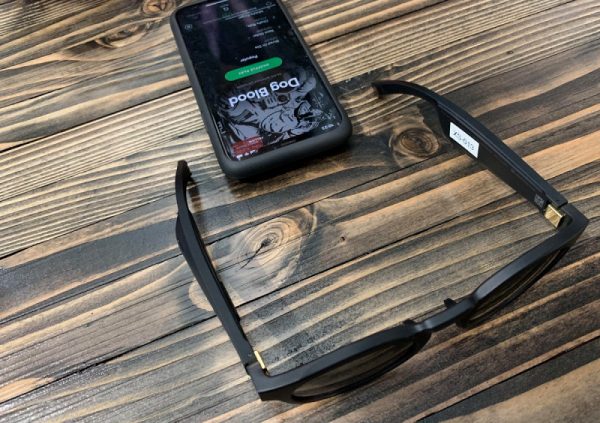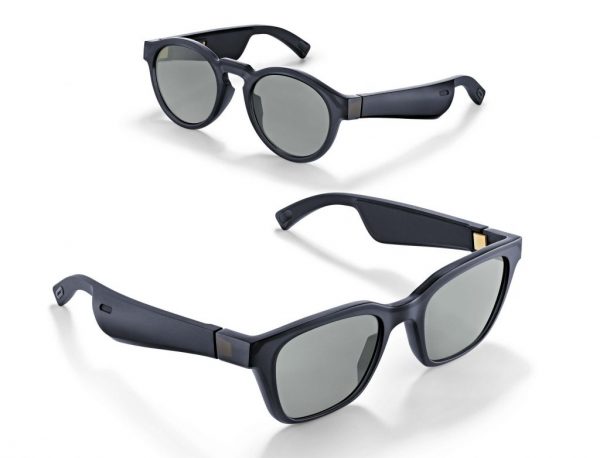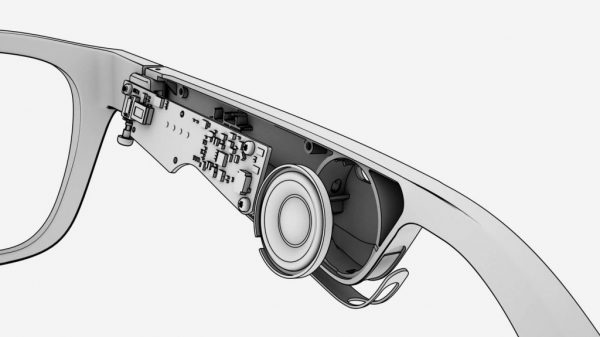Bose AR Showcases Augmented Reality Audio Game
What would a sound systems company be doing with augmented reality glasses? Bose would be unlikeliest of companies to venture into AR smart glasses and AR games but that is exactly what the company is up to with its Bose AR that utilizes augmented reality technology to enhance the world around the wearer with sounds rather than visuals.
Instead of the wearables, Bose is venturing into the hearables market by creating smart audio glasses that allow users to perform multiple tasks such as making calls and listening to music and the glasses will eventually plug into Bose AR Glasses platform experience. Now there is even an AR audio game built for the platform.
A Boston-based indie game studio, Worthing & Moncrief, has developed a game called Overherd that works with the Bose AR glasses. The game is a comic whimsical take on Monty Python & Holy Grail in which a French knight is taunting King Arthur from a castle.

As a player in the game, you have to keenly listen to the voice of a French knight holed somewhere in a castle and try to figure out his location in a circle around you. After doing this by careful listening and tracing the direction in which they sound is coming from, you will in turn face him, double tap on your AR glasses and release a catapult to throw a cow at the French knight’s castle. You will hear a crash sound when your flying cow has hit the castle and eliminated the taunting Frenchman. You can also change the elevation of the targeting by moving your chin up or down.
While listening to the game via the AR sunglasses, you can also look around and see images augmented about your surroundings. Also, you will be the only one who will hear the sounds emanating from the Frames. The AR glasses drive you to concentrate more on the sense of hearing than the sense of sight.
To start using the AR audio glasses, open the Bose Connect app and ensure it has been updated. Once open, you will find the Bose AR-enhanced apps.
The Bose intelligent audio looks quite promising and could be put to diverse uses such as sighthearing, virtual sightseeing and even in games that have spatial awareness. The AR audio game is not going to be easily monetizable but it represents quite clever use of the Bose AR glasses platform.
Bose AR Glasses
Bose first ventured into the hearables arena with its groundbreaking augmented reality sunglasses –also known as Frames- that combine sleek, stylish and fashionable look with world-class tech. Bose’s was not the first intelligent audio offering as Alexa and Google have already come up with smart speakers. The difference is that Bose’s product offers portability, more convenience and comfort. You can wear smart audio glasses and walk around with them for quality audio experience but you can’t really wear speakers and go for a walk. The speaker value-add will pretty much be limited to the home and the car but you can take glasses virtually anywhere. The Bose Frames allow users to have a discrete and hands-free listening experience while on the go as there is negligible sound leakage at standard volumes.
The Frames elegantly side-step some of the challenges around using earbuds while on the go. With their open ear design, they are quite comfortable to wear and quite clean compared to the earbuds that clog the ears and cause some slight discomfort or even pain when worn for a long period of time. The Frames are also quite convenient. Because most of us are used to wearing sunglasses, you wouldn’t even notice that they are there especially because they are also less bulky than your typical AR smart glasses. The Frames are also not easy to lose; as in you can’t lose the glasses you are wearing without even noticing it! In contrast, earbuds get damaged easily and they are also generally much easier to drop or misplace in your handbags or desk drawers.

The Frames audio augmented reality glasses have a pretty superb experiential aspect with their sculptural luxe black cases that simply ooze an understated elegance. Both the product and the accompanying accessories have been tastefully and thoughtfully designed. Its cable, for example, is packaged in a beautiful black jewelry pouch.
The Bose Augmented Reality audio glasses were launched one year ago and the company went as far as setting up a $50 million fund to rope in developers to build applications for the AR glasses. The glasses have in-built sensors that can detect the wearer’s movements. The glasses can even connect a user to their smartphone via Bluetooth in order to pull the Global Positioning System data that helps determine where you are looking and the direction moving towards. From that information, the AR glasses will send sounds to the user’s ears that come in from a particular direction, a feature that has been elegantly leveraged in the AR audio game.
From the fashion tech aspect, you can pick from two styles namely, the bigger angular Alto design and the smaller and rounder Rondo designs. The frames are made from matte black nylon with metallic hinges.
The Frames seamlessly pair with smartphone in a very easy and straightforward manner. The functions are also fairly easy to control. There is an easy to access multifunction press button on the underside of the stem in the right temple which allows you to answer and end calls, play music or to toggle on and off. You can switch off the audio shades in the Frames by flipping them upside down. The AR sunglasses have a battery life that is comparable to that of most wireless earbuds. A big #fail is that the Frames’ charging cable is proprietary and you must have it to charge the glasses.
Audio Performance
In terms of the audio performance, the Bose AR audio glasses live up quite to the Bose hype. The Frames deliver beyond expectations irrespective of their small sizes and the “open ear” style of the speakers even when it comes to the micro-acoustics. The sound that enters the ears still has great clarity and resonance. You can comfortably use these to listen to your favorite podcast or songs as you jog around.

Sound conduction from the AR smart glasses to the ears occurs via small drivers positioned on the stems of the frames. This allows you to get ‘fat’ and clear sound with great immersive quality even though the speakers on the Frames don’t rest inside the ears of the wearer. Also, unlike in small treble-heavy earbuds, you won’t experience sound fatigue after extended periods of listening.
The sounds from the Frames are not as good as what you’d get with an over-ear headphone but the AR audio glasses offer a nice trade-off for the comfort and convenience. The speakers in the Frames are ‘open ear’ but there won’t be much sound leakage at standard listening volumes so you don’t have to worry about people around you eavesdropping on what you are listening to.
Another key drawback is the lack of volume control in the Frames. You will have to do this via your smartphone.
The Frames were designed with an augmented reality use-case in mind so expect the glasses to offer you a contextually intelligent audio experience. Not only are the glasses aware of spatial locations, they are also built with Artificial Intelligence assistants that can tell where you are facing. This intelligent contextual awareness enables the device to provide users with very relevant information about their experience. Some of the more advanced features are yet to be activated in the device so for now they will mostly be used for taking phone calls and listening to music.
https://virtualrealitytimes.com/2019/04/07/bose-ar-showcases-augmented-reality-audio-game/https://virtualrealitytimes.com/wp-content/uploads/2019/04/Bose-smart-glasses-are-available-in-two-styles-600x458.jpghttps://virtualrealitytimes.com/wp-content/uploads/2019/04/Bose-smart-glasses-are-available-in-two-styles-150x90.jpgAR HeadsetsHardwareWhat would a sound systems company be doing with augmented reality glasses? Bose would be unlikeliest of companies to venture into AR smart glasses and AR games but that is exactly what the company is up to with its Bose AR that utilizes augmented reality technology to enhance the...Sam OchanjiSam Ochanji[email protected]EditorVirtual Reality Times - Metaverse & VR
